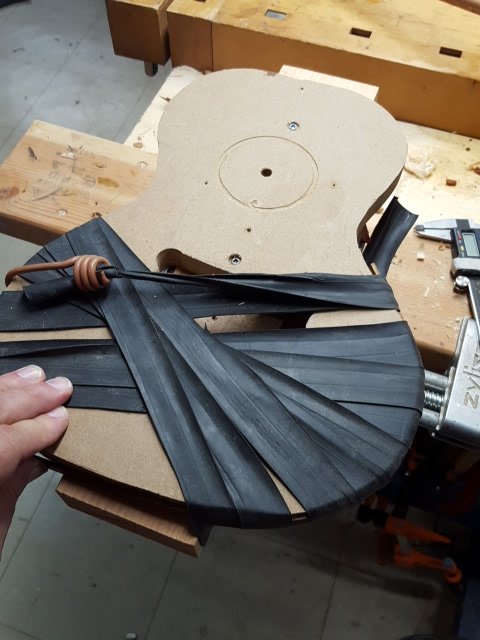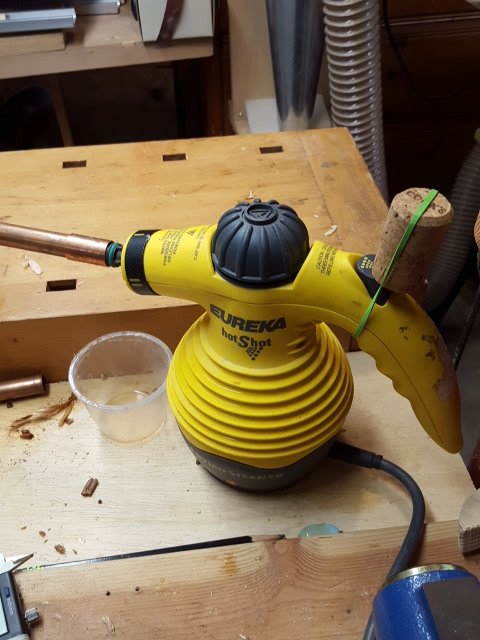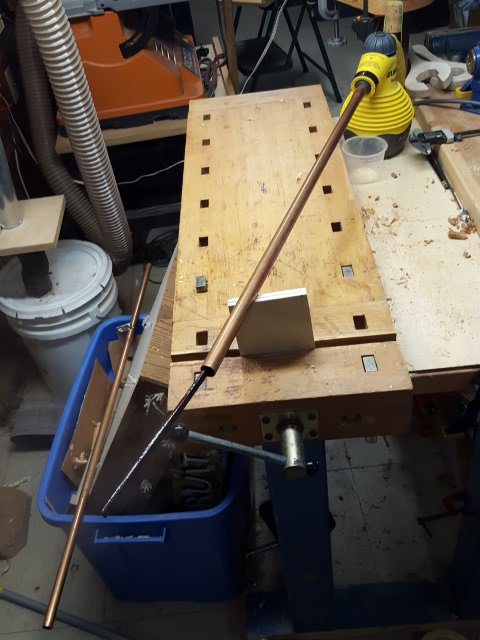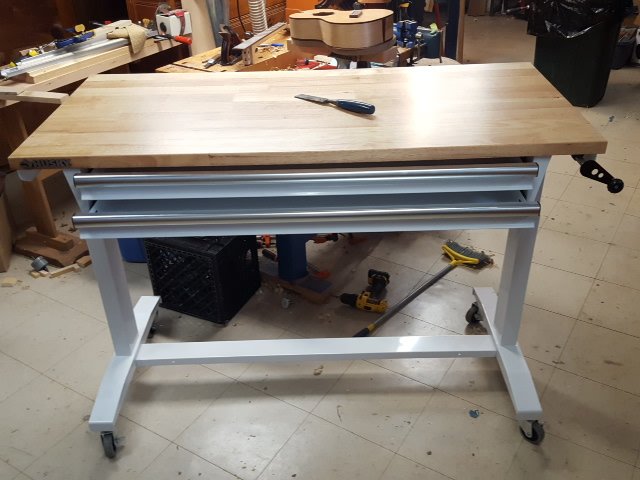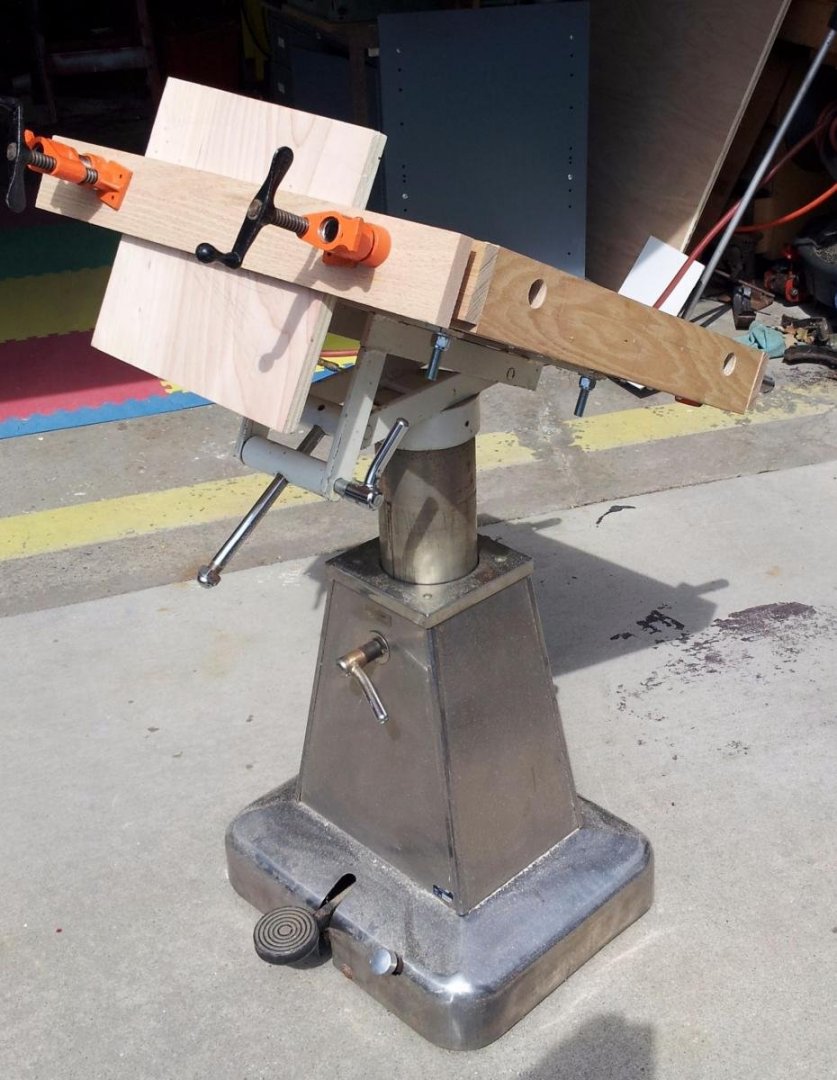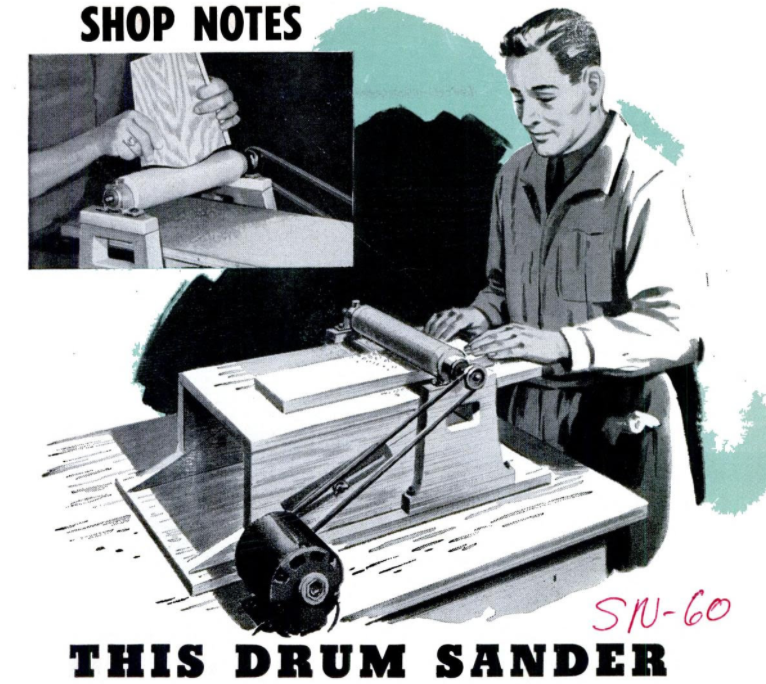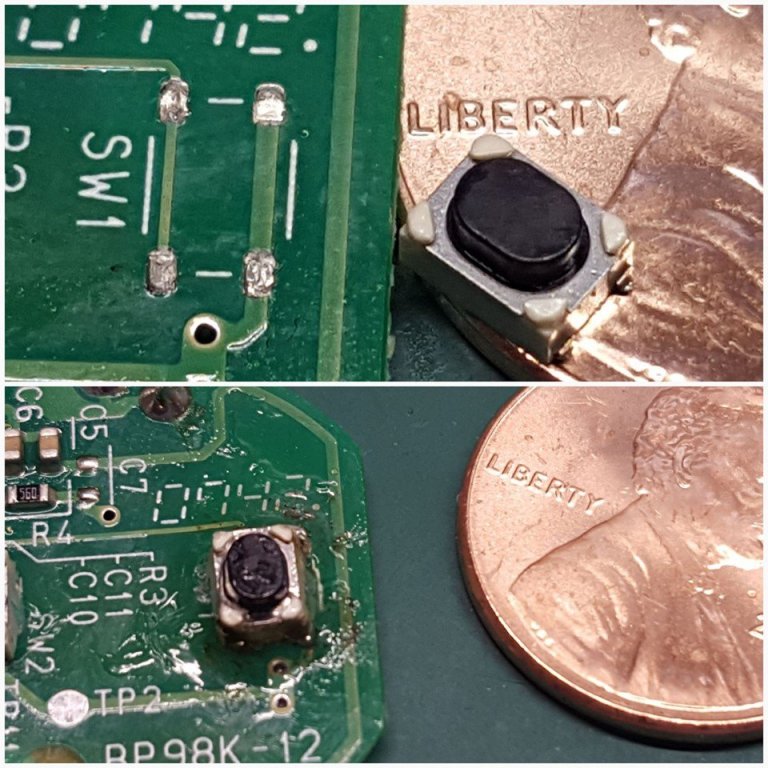
Bob Blarney
Members-
Posts
467 -
Joined
-
Last visited
Content Type
Profiles
Forums
Gallery
Events
Everything posted by Bob Blarney
-
Recommended toolkit for beginner
Bob Blarney replied to Niall's topic in Modeling tools and Workshop Equipment
A source for reasonably priced tools is CR Hill in Berkley, Michigan. They supply fine tools to the jewelry trade and artists. https://www.crhill.com/ -
Lee Valley Veritas Hand Joinery
Bob Blarney replied to Jack12477's topic in Modeling tools and Workshop Equipment
I like most Lee Valley tools, but this is what I call an 'executive' tool. Sure, it does a nice job, but there are substantially less expensive ways to get the same results. I could set up my trusty old Stanley 60-1/2 to do that in a jiffy. By the way, I'd probably tack-glue the stock on to a larger board, or cut a board with a recess to carry the stock across the plane. It would be safer and easier to plane the small stuff. Another way is to glue one end of the stock on a board, plane it to shape, and then cut/chip off the glued end. -
Pantograph to enlarge plans
Bob Blarney replied to Sambini's topic in Modeling tools and Workshop Equipment
Just a word of caution about photocopied plans. I had a set of guitar plans copied and laminated in plastic for the building on the benchtop. (I file the originals away for safekeeping). During construction, I used a commonly-used online fret spacing calculator for the fingerboard. When the guitar was finally strung up, it didn't sound right. It turned out that intonation (distance from nut to saddle) was off because the dimensions of the photocopy were a few percentage points too short. It was not too difficult to correct, but next time I'll check closely. For your purposes, this is probably not a matter of great concern, so long as you have all the copies that you need made at the same copying session. If you go several times, the last copy may not match the first. -
Jet or Dewalt scroll saw
Bob Blarney replied to Anguirel's topic in Modeling tools and Workshop Equipment
Several of my tools were purchased on Craigslist, and I recommend that you research the tool before going to look. Know how it operates, and see if there are particular problems in using or breakdowns. Find out if parts are available. Never pay more than 50-66% of original price unless it is pristine. Look at the seller's place - are other things in order? -
Steamer for bending planks
Bob Blarney replied to Bob Blarney's topic in Modeling tools and Workshop Equipment
Here you can see how I've clamped a piece of binding, using strips of bicycle inner tube to clamp and support the binding strip as I've been bending it. This keeps it from fracturing on the outside surface. You can also cut rubber bands of various widths from bicycle inner tubes for other clamping needs. -
I needed to bend some granadilla, a very hard rosewood, to make bindings for a very small guitar. And so I came up with this mini steamer that I thought you might be interested in seeing. It works.
-
MagEyes anybody use them ? Which ones and Y
Bob Blarney replied to NovaStorm's topic in Modeling tools and Workshop Equipment
"MagEyes anybody use them ? Which ones and Y" I had to do a doubletake to get the meaning of the title. Was sent from a phone? -
Jet or Dewalt scroll saw
Bob Blarney replied to Anguirel's topic in Modeling tools and Workshop Equipment
It's sad to read this. -
Proxxon jigsaw or a scroll saw
Bob Blarney replied to Edwardkenway's topic in Modeling tools and Workshop Equipment
The name of the excellent coping/fret saw is Knew Concepts, https://www.knewconcepts.com/Coping-saws.php -
variable height desks
Bob Blarney replied to bigcreekdad's topic in Modeling tools and Workshop Equipment
I've got two, but one will be donated to an artists' organization if I don't soon incorporate the mechanism into a larger bench. I work on many types of objects, and the variable height makes things easier. I've found it's easiest to locate the workpiece at elbow height. One is based upon a salvaged veterinary operating table. The top had broken mounts, and so I put a top with clamps on it. What makes it special is that it has a pedal-operated hydraulic jack that can lift the top about 12", and the column and inclination mechanism allows it to rotate 360 degrees and incline from 0 to 85 degrees. It can lift probably 400-500 lbs, which is more than I could ever lift and place on its top. The other one is one that I bought today for $200. The top is 24 x 52 inches, and the height is variable from 26 to 42 inches. The lower drawer is 39 x 16 x 1.5 inches, and the upper is 39x8x1.5, and they're on ballbearing slides. The base is powder-coated steel. I will make a cabinet with additional drawers that will be mounted on the base, probably resting on the crossbeam and attached to the columns. This will add more storage space and mass to the bench. -
Proxxon jigsaw or a scroll saw
Bob Blarney replied to Edwardkenway's topic in Modeling tools and Workshop Equipment
The enemies of any cutting process are slippage and vibration. With power tools there's also the phenomenon of harmonic vibration, which does not appear when using hand tools. Perhaps you're using the wrong hand saw. Try a jeweler's saw (or you coping saw), with a variety of blades, and use it with a birdsmouth attached firmly to a solid bench. If that goes ok, then look into a buying a high-end coping/fret saw - the brand name of a premier saw escapes me at the moment - (New Saw Concepts?). There is also a very specialized saw for marquetry & veneer work, a chevalet Here's a few pics of a birdsmouth. http://blog.oldwolfworkshop.com/2015/05/coping-saw-appliance.html -
Shop Fire Extinguisher
Bob Blarney replied to Roger Pellett's topic in Modeling tools and Workshop Equipment
As mentioned above, always keep the fire extinguisher near the exit door. Never let a fire get between you and the door. if there is any doubt about being able to quench it leave immediately. As for the phone, well, I got rid of regular house phones a decade or so ago (a damned nuisance that I didn't want to pay for), and I always keep my cellphone in my pocket. If you do call 911, don't forget to say the address because that info may not be available to the operator. -
Your lathe is a versatile tool. Here I'm polishing and washing 50 small parts. The pill vial is held in the pen-blank jaws, with a dead-center rod to give it a small offset for tumbling the parts. My lathe is powered by a variable speed DC motor that I scavenged from a bedroom clothes rack (aka an exercise treadmill). It gives speed from ~20-4000 RPM with a simple modification of the controller board, and is reversible too (use a chuck that locks on the spindle!) Washer.mp4
-
Yep, a lot of people sell pens now. But it was more than a fad - many people made the rent when times were hard after the Mortgage Meltdown that destroyed the economy in late 2007. But for me, I never kept an inventory - that was too expensive. It was about working with someone person-to-person in an artist/craftsman way to make a pen that they really liked and used. It was a matter of engaging them in the process, and I've run into people who wave their pens at me that were turned years ago. It was fun, and sometimes I still do it. All that said, I'd say that learning one craft always aids in learning another. The experience of handling tools with one's hands sharpens the imagination.
-
great work on the knives. I know what you mean about lathework and turning pens. I made one once to avoid watching the news when I got home from work. I took it work and showed someone, and soon people were calling me to turn pens. Well, it got a little embarrassing because I wasn't there to sell pens, but when someone offers $50-150 for an hour or two of relaxing work then why not? It also paid for some shop improvements.
-
Small but handy hammer
Bob Blarney replied to BETAQDAVE's topic in Modeling tools and Workshop Equipment
I have one in my travel toolbox, and sometimes I have other occasions to use, e.g. in a tight space. -
Mini Lathe recommendations?
Bob Blarney replied to jfinan's topic in Modeling tools and Workshop Equipment
I'm not convinced that a lathe is necessary for you, but that doesn't mean that it wouldn't be useful. And it might actually be fun! Of all my tools, the lathe has brought the most hours of creative enjoyment, and has proven profitable too by sales of small items such pens, tableware, and a chess set. -
I work on a larger scale than model ships, but having build a few guitars and other finer things, here's my two cents for smaller work. 1. A drill press can do many jobs- drill and sand. 2. A good jigsaw (scrollsaw) - Hegner and DeWalt make good machines A sander? - a combo disc/belt sander can be very handy. I'd invest in some finer hand tools - a sturdy bench with a vise (or two), fine-tooths Japanese pullsaws, , some knives, a good small handplane. Whatever tools you buy, place them on a study workbench to reduce vibration as much as possible, maybe with some vibration absorbing materials underneath them. Vibration is bane of all tools, especially powertools.
-
Home made thicknessing sander if
Bob Blarney replied to Cabbie's topic in Modeling tools and Workshop Equipment
Efficient dust collection is important, and it may obviate the need for an expensive TEFC motor. I agree about the 1/3HP, but light cuts shouldn't overheat a motor. Hmm, I wonder if anybody has thought about roughing the wood down with a handplane first - it might save a huge amount of time and airborne dust. -
Home made thicknessing sander if
Bob Blarney replied to Cabbie's topic in Modeling tools and Workshop Equipment
A word of caution about these designs: It's best to stand to the side when feeding stock, because if your fingers slip (fine dust acts as a lubricant) then the stock can be ejected at high velocity. A 6" x 36" guitar side-rib blank once slipped through my fingers and flew across the room and shattered when it hit the wall. That was an expensive bit of lumber that was ruined, and then there was the issue of the orphaned bookmatched other side-rib. This is one reason that I would make a gravity-driven sled that carries the stock through. -
Home made thicknessing sander if
Bob Blarney replied to Cabbie's topic in Modeling tools and Workshop Equipment
The dimensions of the sander can be changed for width & height. A 1:8 taper will give a good compromise between length & adjustment range. E.g. 1.0mm horizontal displacement will give a 0.125mm thickness adjustment. It's not too difficult to make a direct reading scale (and a vernier) if the taper is not 'perfect' - that could be discussed later. For a threaded rod adjuster, you could savage a handscrew clamp for one of its screws and its pivot barrel nuts. Btw, here's a thickness sander that I made years ago. I think the PM version is better. (I think the link still works): http://www.mimf.com/old-lib/hammond_sander_lathe.htm -
Optivisor Recommendations?
Bob Blarney replied to Landlubber Mike's topic in Modeling tools and Workshop Equipment
Another technique for fine control on small handheld objects, is to keep the pinky/rings fingertips touching each other. For instance, try this for threading a needle. -
Optivisor Recommendations?
Bob Blarney replied to Landlubber Mike's topic in Modeling tools and Workshop Equipment
The cellphone must mounted on a stand or arm of some sort. One of the old Luxo extension arm lamps would be perfect for adaptation, or the old semi-rigid gooseneck lamps. Alternatively. a machinist's dial indicator positioner could work too, but it would be a bit short. I have a background in research surgery, where occasionally one must work through an operating microscope that has a similar magnification range. It takes a bit of training, but it's doable. It helps if the forearms are supported, as some people eat at a table with the forearms resting on the edge of the table, near the elbows. Sometimes, the dominant hand is laid upon the wrist of the non-dominant handarm which is used as artist's maul stick. -
Home made thicknessing sander if
Bob Blarney replied to Cabbie's topic in Modeling tools and Workshop Equipment
That's a classic design for a shopbuilt sander. The key points are to set the plane of the platten exactly parallel to the axis of the lathe, so as to ensure uniform thickness (or displace it to make beveled planks). The second point is to feed the stock at a rate that cuts steadily without boggind down the motor - this is determined by experience with the grit and the wood species. I think an interesting idea would be to make a 'gravity-drive' sled to carry the stock. I would attach weights to pull the sled through at a constant speed so that the results are more uniform. From the 'Days of Old' (PM, June 1958) here's a scalable design that I really like. The construction is very robust and the fineness of adjustment is excellent and easy. It needs a dust shroud, however. Again, I would add a gravity-drive sled. https://books.google.com/books?id=KN8DAAAAMBAJ&lpg=PP1&pg=PA191#v=onepage&q&f=true -
Optivisor Recommendations?
Bob Blarney replied to Landlubber Mike's topic in Modeling tools and Workshop Equipment
I have an optivisor and while it does work ok, it gets tiresome to wear at times. I think I've found an alternative for some tasks. Recently my auto remote stopped working and I found that a tiny 4-contact switch had broken off the PC board. So I soldered it back on (what fun). I took a couple of pics to illustrate the problem, and then I realized that my cellphone would be very good for close work and more comfortable than the optivisor. I'm re-engineering a desk lamp to hold the cellphone for this purpose. Here are the pics that I took while soldering on the switch that show the fine detail. (After re-soldering the switch, I globbed on some DAP RapidFuse superglue to ensure that it will stay in place.)
About us
Modelshipworld - Advancing Ship Modeling through Research
SSL Secured
Your security is important for us so this Website is SSL-Secured
NRG Mailing Address
Nautical Research Guild
237 South Lincoln Street
Westmont IL, 60559-1917
Model Ship World ® and the MSW logo are Registered Trademarks, and belong to the Nautical Research Guild (United States Patent and Trademark Office: No. 6,929,264 & No. 6,929,274, registered Dec. 20, 2022)
Helpful Links
About the NRG
If you enjoy building ship models that are historically accurate as well as beautiful, then The Nautical Research Guild (NRG) is just right for you.
The Guild is a non-profit educational organization whose mission is to “Advance Ship Modeling Through Research”. We provide support to our members in their efforts to raise the quality of their model ships.
The Nautical Research Guild has published our world-renowned quarterly magazine, The Nautical Research Journal, since 1955. The pages of the Journal are full of articles by accomplished ship modelers who show you how they create those exquisite details on their models, and by maritime historians who show you the correct details to build. The Journal is available in both print and digital editions. Go to the NRG web site (www.thenrg.org) to download a complimentary digital copy of the Journal. The NRG also publishes plan sets, books and compilations of back issues of the Journal and the former Ships in Scale and Model Ship Builder magazines.


